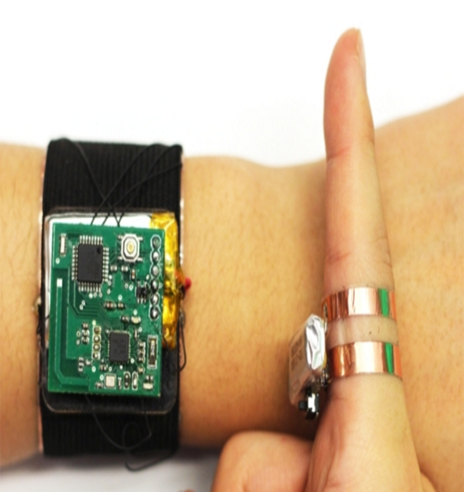By Prachi Patel
Researchers in growing numbers are starting to enlist do-it-yourself 3-D printers, cheap electronics, sensors and more to advance their work
To do science, scientists need money—and usually a lot of it because specialized equipment and tools don’t come cheap. That means researchers often have to spend a significant amount of time pursuing funds from government agencies and private entities. But the era of open-source software and cheap hardware, including 3-D printers, is making it easier for them to quickly test innovative ideas and make their own research tools. These technologies are typically considered the dominion of “makers,” a word that evokes tinkerers and hobbyists, yet many scientists have begun to embrace the build-it-yourself ethos to advance their research in a variety of fields, including energy, transportation, neuroscience and consumer electronics.
In the hands of scientists, maker tools can help transform ideas into tangible objects, speed up research and stretch funding dollars, says Joan Horvath, co-founder of consulting firm Nonscriptum LLC, who organized the first maker symposium for scientists in June at the American Association for the Advancement of Science Pacific meeting. Especially for researchers who need a piece of equipment that doesn’t exist or is too expensive to buy outright, “the capability of maker technologies is incredibly promising,” she adds.
The joining of science and the maker movement is “not only a great thing but an inevitable thing,” says Conor Russomanno, co-founder of OpenBCI, a company that builds a low-cost brain-computer interface kit. The kit includes a 3-D printed electrode headset that fits on the head like a skullcap, a circuit board and open-source software that controls the technology. By opening up brain-wave research to DIYers and non-experts and encouraging an online data-sharing community, Russomanno hopes to accelerate neuroscience.
Scientists at national labs and research agencies are also getting creative with maker technologies. Last year, a group of U.S. Department of Energy scientists and engineers started using 3-D printing to make, quite literally, a gigantic change in wind turbine production. Making 30-plus-meter-long turbine blades costs millions of dollars and takes about a year, says Lonnie Love, a mechanical engineer at the DOE’s Oak Ridge National Laboratory in Tennessee. Using 3-D printing, Love and his colleagues now make them in weeks for tens of thousands of dollars. In addition to saving time and money, 3-D printing could make wind power generation more efficient. Wind patterns across a wind turbine farm change, Love says, “so ideally you want different blade shapes at different points to generate the most electricity.” Manufacturers today take a cookie-cutter approach to turbine blades because making them is costly and complex. With 3-D printed molds, they could fill wind farms with different cleverly designed turbines.
Other scientists are using 3-D printed tools to study invasive species and advance materials science. Horvath and a team of entomologists at the University of California, Riverside are printing custom-designed plastic traps to capture and study the polyphagous shot hole borer beetle, a tree pest that bores into trees and carries a pathogenic fungus that threatens Southern Californian forests. The uniquely shaped traps would have cost significantly more if a manufacturer made them. Over at the Lawrence Berkeley National Laboratory, nanobiochemist Ronald Zuckermann prints flexible 3-D plastic models of peptide-like polymers to study how they fold into stable structures. The shape and dynamics of the polymer chain dictate its properties for medical use. “The understanding I have gained from the model has been invaluable in helping me design new polymers,” Zuckermann says.
Beyond 3-D printing, scientists have also raided the maker toolkit for cheap sensors, open-source electronics and freely distributed software. For example, at Carnegie Mellon University, computer scientist Chris Harrison has invented a way to convert skin into a touchpad that might someday let smartwatch wearers navigate their tiny screens by swiping or tapping on their forearm. The SkinTrack system depends on an inexpensive radio frequency transmitter, an electronic sensor circuit built from a generic radiofrequency detector and transmitter chips and open-source Arduino microcontroller chips that the research team bought online. They also wrote the software that controls the system using open-source programming languages and toolkits. “It’s not perfect but it’s good enough to allow us to push the limits of technology and answer the questions we’re interested in,” says Harrison’s graduate student Gierad Laput. Along the way, the team has also picked up machining, welding and carpentry skills. Scientists and engineers are thinkers but they are also makers, Harrison says, and hands-on building skills boost their ingenuity.
The maker ethos extends beyond just the tools to build. Makers are adamant about sharing data—and this openness makes research more effective, according to Oak Ridge’s Love. “People can learn quickly instead of repeating what others have done,” he explains. Love and the DOE wind turbine researchers take this to heart and make their data public on an ongoing basis before they have a final result or product. “Makers believe in making things so fast that by the time others catch up you are onto the next big thing,” he adds.
Horvath says that biologists have been early adopters of maker technologies because they need specialized tools, such as that tree boring beetle-trap, that don’t exist. But she has also seen interest in maker technologies from physicists, chemists, and electrical engineers who don’t have immediate funds for project ideas and are willing to think out of the box. Still, the scientist-maker relationship is nascent and most researchers aren’t yet aware of the promise of maker technologies. “I think it’s still early to see the impact of maker technologies on science,” she says.
